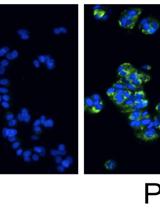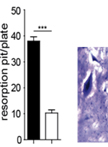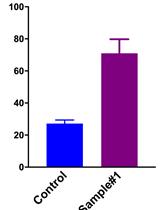- Submit a Protocol
- Receive Our Alerts
- Log in
- /
- Sign up
- My Bio Page
- Edit My Profile
- Change Password
- Log Out
- EN
- EN - English
- CN - 中文
- Protocols
- Articles and Issues
- For Authors
- About
- Become a Reviewer
- EN - English
- CN - 中文
- Home
- Protocols
- Articles and Issues
- For Authors
- About
- Become a Reviewer
Measurement of the Intracellular Calcium Concentration with Fura-2 AM Using a Fluorescence Plate Reader
Published: Vol 7, Iss 14, Jul 20, 2017 DOI: 10.21769/BioProtoc.2411 Views: 33745
Reviewed by: Andrea PuharDavid A. CisnerosAnonymous reviewer(s)

Protocol Collections
Comprehensive collections of detailed, peer-reviewed protocols focusing on specific topics
Related protocols

Metabolic Assays for Detection of Neutral Fat Stores
Jan M. Baumann [...] Douglas S. Conklin
Jun 20, 2015 15537 Views
Abstract
Intracellular calcium elevation triggers a wide range of cellular responses. Calcium responses can be affected or modulated by membrane receptors mutations, localization, exposure to agonists/antagonists, among others (Burgos et al., 2007; Martínez et al., 2016). Changes in intracellular calcium concentration can be measured using the calcium sensitive fluorescent ratiometric dye fura-2 AM. This method is a high throughput way to measure agonist mediated calcium responses.
Keywords: Cell biologyBackground
Activation of G protein coupled receptors triggers production in hundreds or thousands of second messenger molecules. Once stimulated, Gq protein coupled receptors activate phospholipases C (PLC), which cleaves phosphatidylinositol 4,5-bisphosphate (PIP2) into diacyl glycerol (DAG) and inositol 1,4,5-trisphosphate (IP3). DAG remains membrane bound and IP3 is released into the cytosol where it binds to a specific IP3 receptor (calcium channel) in the endoplasmic reticulum (ER). This causes an increase of intracellular calcium concentration that modulates the activation of calcium binding proteins and Protein Kinase C (PKC). Therefore, given the importance of calcium in biological systems, many techniques/methods to analyze and measure Ca2+ levels have been established.
To determine the intracellular Ca2+ concentration, fluorescent indicators are particularly useful. Ca2+ indicators are available with variations in affinity, brightness or spectral characteristics. Fura-2-acetoxymethyl ester (fura-2 AM), is a membrane-permeable, non-invasive derivative of the ratiometric calcium indicator fura-2. Fura-2 AM crosses cell membranes and once inside the cell, the cellular esterases remove the acetoxymethyl group. Ca2+-bound fura-2 AM has its excitation maximum at 335 nm, Ca2+-free fura-2 AM has its excitation maximum at 363 nm. In both states, the emission maximum is about 510 nm. The typical excitation wavelengths used are 340 nm and 380 nm for Ca2+-bound and Ca2+-free fura-2 AM, respectively. The ratios 510 nm/340 nm and 510 nm/380 nm are directly related to the amount of intracellular Ca2+ (Figure 1). Traditionally, changes in intracellular Ca2+ mobilization/concentration were measured using fluorescent calcium indicators and a fluorescent confocal microscope, known as calcium imaging. This protocol explains how to use the Tecan Infinite M200® microplate reader equipped with an injector to measure intracellular Ca2+ concentration. With the aid of an injector equipped microplate reader, researchers may be able to screen new agonist for Gq protein couple receptors and evaluate how the intracellular calcium mobilization is affected by mutant receptors. This protocol can be adapted to measure agonist mediated intracellular calcium mobilization in several cellular/receptor/agonist models using the appropriate growth conditions.
Figure 1. The human P2Y2 receptor mobilizes intracellular Ca2+ efficiently when expressed in 1321N1 human astrocytoma cells. Representative traces of intracellular calcium responses to 100 μM ATP in 1321N1 cells transfected with hHA-P2Y2R (solid squares) and control non-transfected 1321N1 cells (solid circles). Data represent the mean ± SEM of readings from 4 independent experiments.
Materials and Reagents
- 15 ml centrifuge tube (VWR, catalog number: 89004-368 )
- Clear flat-bottom black 96-well culture trays with lid (Corning, catalog number: 3904 )
- Wild type (WT) human 1321N1 astrocytoma cells devoid of P2 receptors and hHA-P2Y2R expressing 1321N1 cells (gift from Dr. Gary A. Weisman, University of Missouri)
- DPBS
- Trypsin (TrypLE Express) (Thermo Fisher Scientific, GibcoTM, catalog number: 12604013 )
- Probenecid (water soluble) (Thermo Fisher Scientific, InvitrogenTM, catalog number: P36400 )
- Adenosine 5’-triphosphate disodium salt (ATP) (Tocris Bioscience, catalog number: 3245 )
- Sodium chloride (NaCl) (Sigma-Aldrich, catalog number: S7653 )
- Potassium chloride (KCl) (Sigma-Aldrich, catalog number: P9333 )
- Calcium chloride (CaCl2) (Sigma-Aldrich, catalog number: C1016 )
- Magnesium chloride (MgCl2) (Sigma-Aldrich, catalog number: M8266 )
- HEPES (Sigma-Aldrich, catalog number: H0887 )
- Glucose (Sigma-Aldrich, catalog number: G8270 )
- Bovine serum albumin (BSA) (Sigma-Aldrich, catalog number: A2153 )
- Fura-2-acetoxymethyl ester (fura-2 AM) (Thermo Fisher Scientific, InvitrogenTM, catalog number: F1225 )
- Pluronic F-127, 20% (w/v) stock in DMSO (Thermo Fisher Scientific, InvitrogenTM, catalog number: P3000MP )
- Dulbecco’s modified Eagle’s medium–low glucose (DMEM) (Sigma-Aldrich, catalog number: D2902 )
- Fetal bovine serum (FBS) (Sigma-Aldrich, catalog number: F6178 )
- Antibiotic/antimicotic (Sigma-Aldrich, catalog number: A5955 )
- Geneticin, G418 (Thermo Fisher Scientific, GibcoTM, catalog number: 10131035 )
- HEPES buffered saline (HBS), pH 7.4 (see Recipes)
- Dye solution (see Recipes)
- Medium for wild type (WT) human 1321N1 astrocytoma cells (see Recipes)
- Medium for hHA-P2Y2R expressing 1321N1 cells (see Recipes)
- Low serum medium (see Recipes)
Equipment
- Tecan Infinite M200® (Tecan Trading, model: Infinite® M200 )
- Fisher Scientific Mini vortex (Fisher Scientific)
- Eppendorf 5810R Benchtop centrifuge (Eppendorf, model: 5810 R )
- Biorad TC10 cell counter® (Bio-Rad Laboratories, model: TC10TM Automated Cell Counter )
Note: This product has been discontinued. - Fisher Scientific Isotemp CO2 Incubator (5% CO2, 37 °C) (Fisher Scientific)
- Laminar flow biological hood
Software
- i-Control® (Tecan Trading AG, Switzerland)
- Excel® (Microsoft)
- GraphPad Prism® (GraphPad Software Inc., La Jolla, CA)
Procedure
- Cell culture and fura-2 loading
- Maintain cells with the appropriate media in an incubator (37 °C, 5% CO2).
- Grow cell to a 90% confluency, discard the cell medium, wash with DPBS and detach with trypsin.
- Re-suspend detached cells with 5 ml of cell culture medium and transfer to a 15 ml centrifuge tube.
- Centrifuge at 300 x g for 5 min.
- Discard cell culture medium and re-suspend cells with 5 ml of low serum medium.
- Seed cells 16 h before experiments in clear flat-bottom black 96-well culture trays at a density of 3.0 x 104 cells/well (80-90% confluent).
- Discard the medium by carefully inverting the plate and wash once with 200 μl HEPES-buffered saline. Carefully discard HBS by inverting the plate, replace with dye solution and incubate cells 1 h at RT in the dark.
- Remove the dye solution by inverting the plate, wash twice with HBS and cover with 200 μl of HBS supplemented with 2.5 mM probenecid for at least 20 min at RT to allow for fura-2 AM de-esterification.
- Maintain cells with the appropriate media in an incubator (37 °C, 5% CO2).
- Instrument setup
- Open the Tecan i-Control software and enter the following parameters:
Table 1. Dual wavelength Ca2+ indicator assay measurement parameters and instrument settings for the Tecan Infinite M200® with injector. Optimized settings to measure ATP stimulated intracellular Ca2+ mobilization in 1321N1 astrocytoma cells.
- Before performing the assay, it is recommended to clean the injectors and tubing first with distilled water, then with HBS.
- Prime injector A with 1.1 mM ATP solution.
- Set the measurement parameters, insert the plate, remove the plate lid and start the run. Determine fluorescence emission intensity at 510 nm in individual wells alternating excitation wavelengths of 340 and 380 nm every 3 sec for 40 acquisition cycles, using the parameters specified in Table 1.
- Open the Tecan i-Control software and enter the following parameters:
Data analysis
- To express in intracellular calcium concentration in cells, calculate the ratio of 510 nm emission, in response to 340/380 nm excitation.
- Normalize Ca2+ mobilization using the average of the first 9 cycles (unstimulated) as baseline.
- See Appendix for data processing example.
Notes
- Fura-2 AM, under certain staining conditions can accumulate into cell organelles (endoplasmic reticulum, endosome/lysosome, mitochondrion, nucleus). Combinations of dye concentration, incubation time and temperature must be tested to minimize the amount of dye that compartmentalized into organelles (tested by confocal microscopy). Experimental conditions used in this protocol have been optimized for 1321N1 astrocytoma, C6 Glioma and DI TNC cell lines.
- Optimal fura-2 loading time and de-esterification time may be determined empirically depending on the cell type. Fura-2 AM, Pluronic F-127, Probenecid concentrations and incubation time stated in this protocol have been optimized for 1321N1 astrocytoma, C6 Glioma and DI TNC cell lines.
- Receptor agonist solution preparation:
- Agonist solution needs to be prepared taking in consideration well volume and the volume to be dispensed by the instrument injectors.
- E.g., Well initial volume = 200 μl
Volume to be dispense = 20 μl
Well final volume = 220 μl
Desired agonist concentration = 100 μM ATP
Agonist stock concentration = 1.1 mM ATP - Tecan i-Control parameters are optimized for this protocol and must be determined empirically.
- HBS can be stored at 4 °C. Allow to reach room temperature before use.
- Store Pluronic F-127 20% solution at room temperature. If precipitation is observed, the product may be resolubilized by heating at ~40 °C and vortexing before use.
Recipes
- HEPES buffered saline (HBS), pH 7.4
145 mM NaCl
5 mM KCl
1 mM CaCl2
1 mM MgCl2
10 mM HEPES
10 mM glucose - Dye solution
HEPES buffered saline (HBS), pH 7.4
0.1% BSA (w/v)
5 μM fura-2 AM
0.05% Pluronic F-127 - Medium for wild type (WT) human 1321N1 astrocytoma cells
DMEM
10% fetal bovine serum (FBS)
1% antibiotic/antimicotic - Medium for hHA-P2Y2R expressing 1321N1 cells
DMEM
10% fetal bovine serum (FBS)
1% antibiotic/antimicotic
500 μg/ml Geneticin, G418 - Low serum medium
DMEM
1% fetal bovine serum (FBS)
Acknowledgments
Partial support to MMA and NAM was received from the Associate Deanship of Biomedical Sciences of the UPR-MSC. Experiments were performed at the Molecular Sciences Research Center of the University of Puerto Rico. 1321N1 astrocytoma cells (WT and P2Y2R expressing) were a gift from Dr. Gary A. Weisman, University of Missouri.
References
- Burgos, M., Neary, J. T. and Gonzalez, F. A. (2007). P2Y2 nucleotide receptors inhibit trauma-induced death of astrocytic cells. J Neurochem 103(5): 1785-1800.
- Martínez, N. A., Ayala, A. M., Martínez, M., Martínez-Rivera, F. J., Miranda, J. D. and Silva, W. I. (2016). Caveolin-1 regulates the P2Y2 receptor signaling in human 1321N1 astrocytoma cells. J Biol Chem 291(23): 12208-12222.
Article Information
Copyright
© 2017 The Authors; exclusive licensee Bio-protocol LLC.
How to cite
Readers should cite both the Bio-protocol article and the original research article where this protocol was used:
- Martínez, M., Martínez, N. A. and Silva, W. I. (2017). Measurement of the Intracellular Calcium Concentration with Fura-2 AM Using a Fluorescence Plate Reader. Bio-protocol 7(14): e2411. DOI: 10.21769/BioProtoc.2411.
- Martínez, N. A., Ayala, A. M., Martínez, M., Martínez-Rivera, F. J., Miranda, J. D. and Silva, W. I. (2016). Caveolin-1 regulates the P2Y2 receptor signaling in human 1321N1 astrocytoma cells. J Biol Chem 291(23): 12208-12222.
Category
Cancer Biology > General technique > Cell biology assays > Metabolism
Neuroscience > Cellular mechanisms > Intracellular signalling
Cell Biology > Cell signaling > Intracellular Signaling
Do you have any questions about this protocol?
Post your question to gather feedback from the community. We will also invite the authors of this article to respond.
Tips for asking effective questions
+ Description
Write a detailed description. Include all information that will help others answer your question including experimental processes, conditions, and relevant images.
Share
Bluesky
X
Copy link










